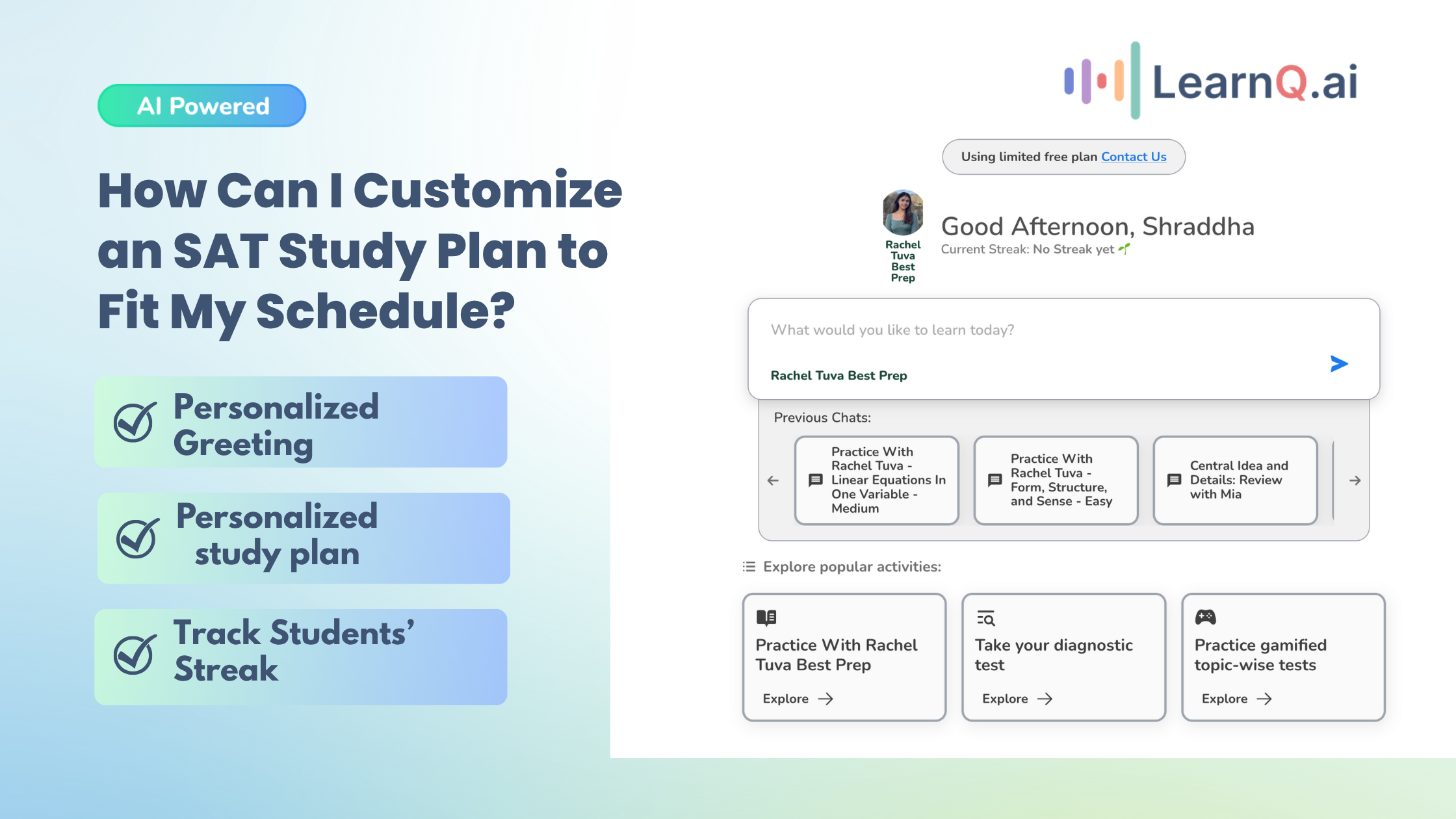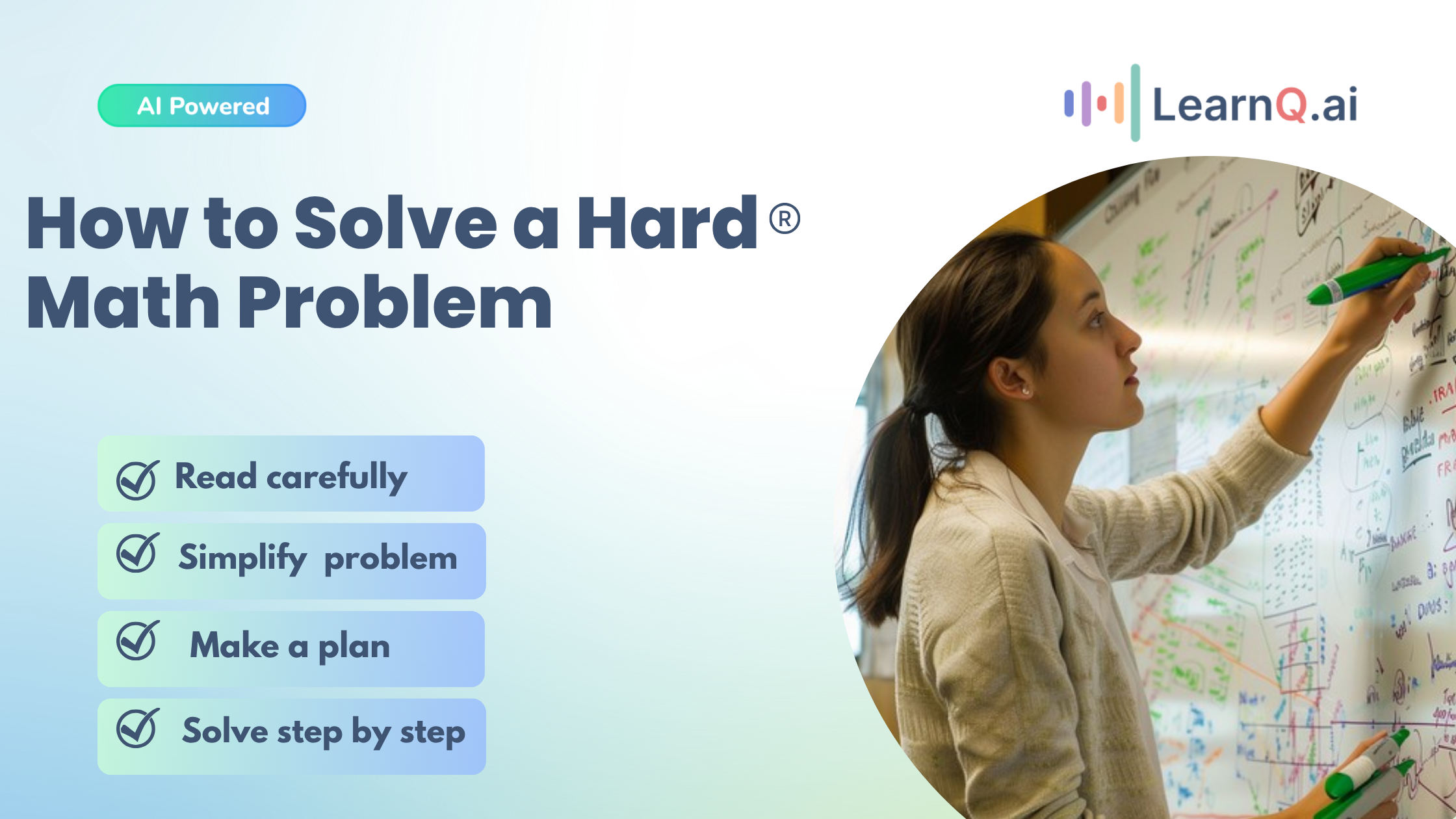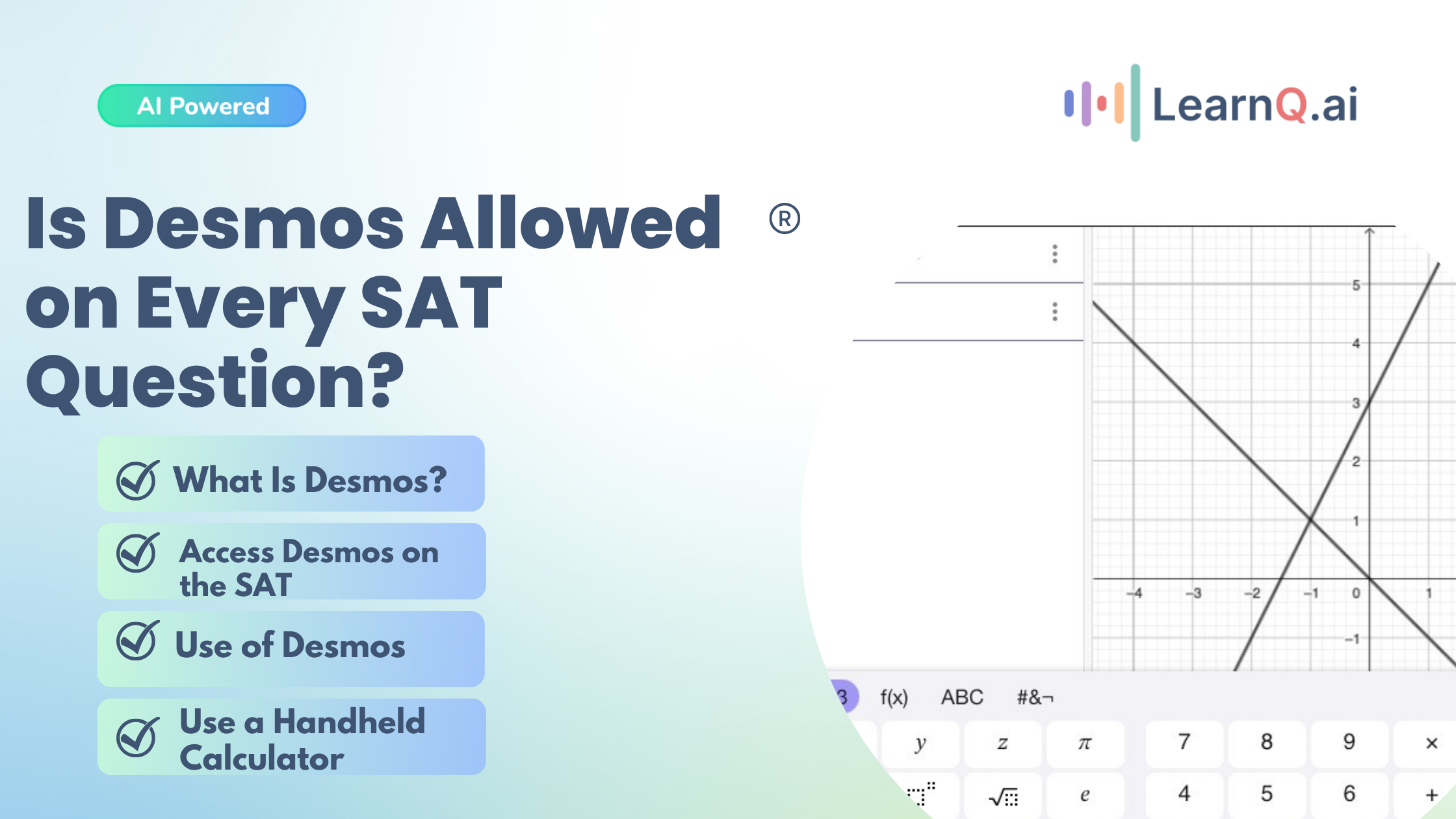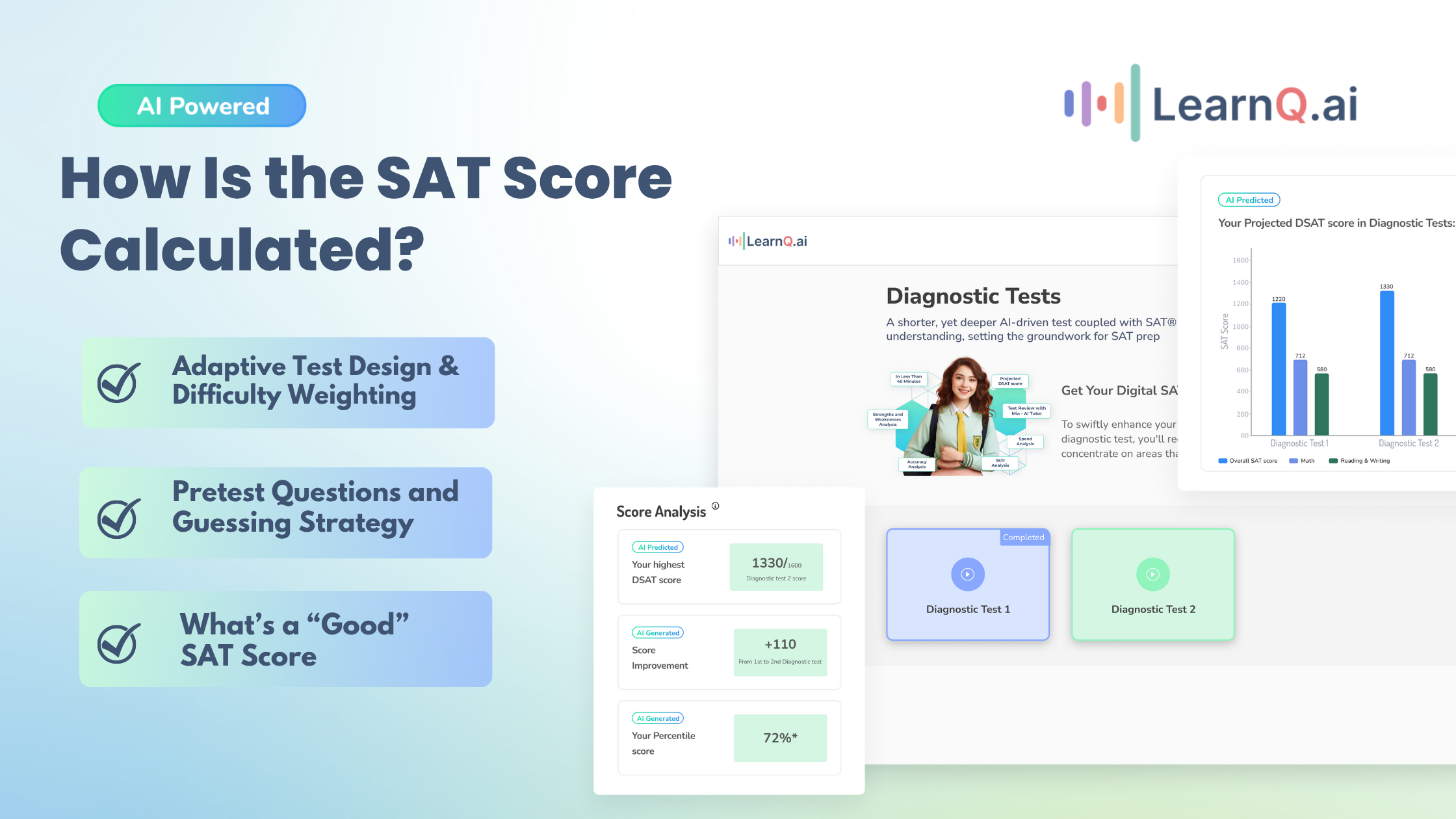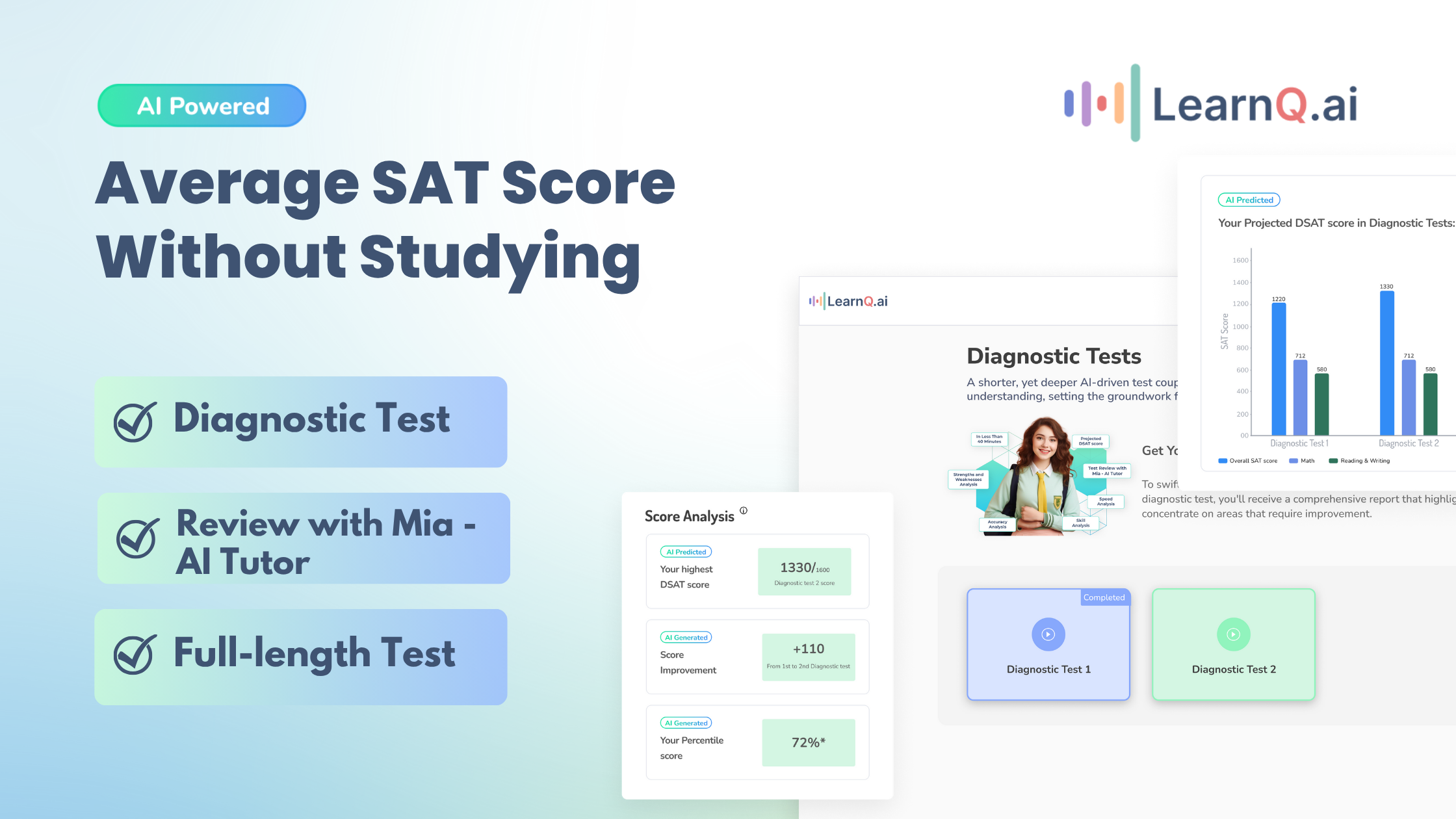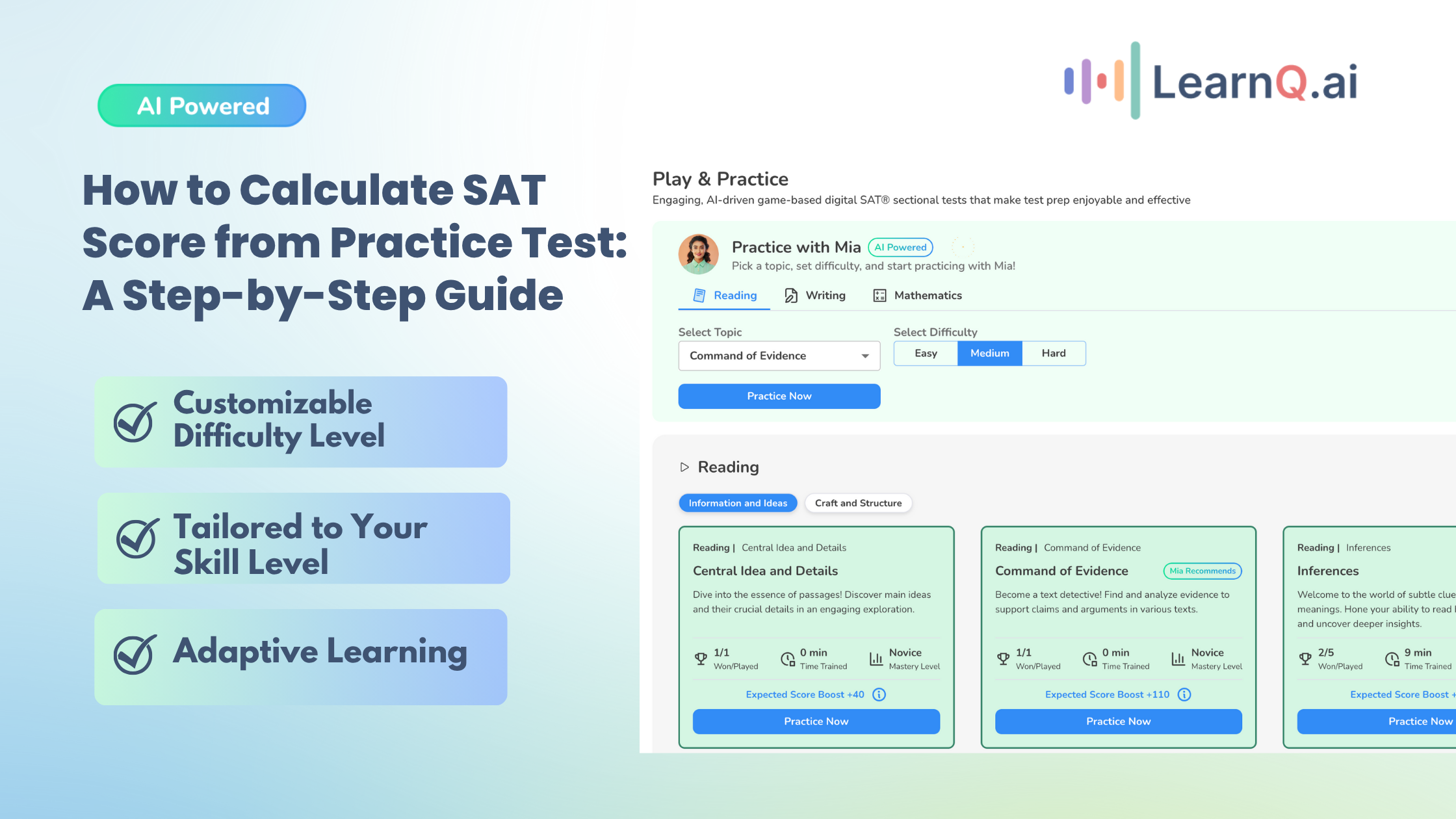Achieving success in the Digital SAT Math section requires a solid understanding of mathematical concepts and the effective use of available resources. One such crucial resource is the Digital SAT Math Reference Sheet.
Leveraging this reference sheet can significantly enhance your test performance by providing quick access to essential formulas and information during the exam.
Let’s try understanding the different formulas on the reference sheet along with other important aspects in the coming sections.
The Importance of Leveraging the Math Reference Sheet
Utilizing the Digital SAT Math Reference Sheet effectively is vital for maximizing your performance on the exam.
Here are some key points highlighting its importance:
- This sheet serves as a valuable tool, allowing you to quickly recall important formulas and principles without having to memorize them all.
- By familiarizing yourself with the reference sheet before the test, you can:
- Save time during the exam.
- Reduce errors in calculations.
- Improve accuracy in solving problems.
- Enhance efficiency in managing exam time.
An Overview of What the Math Reference Sheet Contains
The Digital SAT Math Reference Sheet includes a comprehensive list of formulas and mathematical information that are critical for solving a variety of problems on the test.
This sheet typically looks like this:
By understanding and becoming comfortable with the contents of the Digital SAT Math Reference Sheet, you can approach the exam with greater confidence and efficiency, ensuring that you are well-prepared to tackle the mathematical challenges ahead.
Accessing the Digital SAT Math Section Reference Sheet: A Strategic Guide
By effectively utilizing the reference sheet resource, you can streamline your problem-solving process and demonstrate a comprehensive understanding of mathematical concepts.
Step 1: Locate the Reference Sheet Icon
Before commencing the math section, it is recommended that you spend a few moments familiarizing yourself with the testing interface. Locate the icon situated in the upper right quadrant of the screen. This icon, which may resemble a scientific calculator or a list of symbols, grants access to the reference sheet.
Step 2: Accessing the Reference Sheet
During the math section, when you encounter a problem that necessitates the application of a specific formula, a strategic approach is to leverage the reference sheet. Click on the aforementioned icon in the upper right corner of the screen. This action will prompt the display of a pop-up window containing a comprehensive compilation of formulas commonly encountered in the SAT math section.
Step 3: Utilizing the Reference Sheet Effectively
The primary purpose of the reference sheet is to serve as a memory aid, not a substitute for a solid foundation in mathematical principles. It is crucial to avoid wasting valuable test time attempting to memorize every formula presented. Instead, utilize the reference sheet judiciously to refresh your memory on a particular formula or to verify the accuracy of a formula you may be recalling.
By familiarizing yourself with the location and functionality of the reference sheet beforehand, you can optimize your test-taking experience. The ability to locate and access the reference sheet swiftly allows you to dedicate more time and focus to the strategic application of your mathematical knowledge toward solving problems with confidence.
Now, let’s try to familiarize ourselves with other aspects of the reference sheet.
Familiarizing with the Reference Sheet in the Digital SAT Math Section
Becoming well-acquainted with the Digital SAT Math Reference Sheet is a key step toward maximizing your performance on the exam.
Here’s how to effectively familiarize yourself with this crucial resource:
LearnQ.ai is Powered by VEGA AI—Is your Institute Next?
Give students a Duolingo-style test-prep platform with Shopify-level customization for tutors and institutes.
Understanding the Structure of the Reference Sheet
The Digital SAT Math Reference Sheet is designed to be user-friendly, allowing you to quickly find the information you need during the test.
Understanding this structure can help you navigate the sheet more efficiently:
- The reference sheet is designed to be user-friendly and accessible during the test.
- It is organized into different sections based on different types of formulas that revolve around geometry and trigonometry.
Identifying the Formulas and Concepts Included on the Reference Sheet
To make the most of the reference sheet, it’s important to identify and understand the formulas and concepts it includes.
Let us try to understand all the formulas given on the reference sheet:
- Area of Circle, and Circumference of Circle
- π (pi) is a mathematical constant approximately equal to 3.14159.
- r is the radius of the circle (the distance from the center of the circle to any point on its circumference).
- Area of Rectangle
A= lw
Where, l= length of the rectangle
w= width of the rectangle
- Area of Rectangle
A= (0.5)bh
Where,
- 𝑏 is the length of the base of the triangle (the edge of one side).
- ℎ is the height of the triangle.
In a right triangle, the height is the same as one of the sides forming the 90-degree angle. For non-right triangles, the height extends from the base to the opposite vertex, dropping down through the interior of the triangle (unless otherwise specified).
- The Pythagoras Theorem
In a right triangle, the squares of the two smaller sides ( 𝑎 and 𝑏) are added together. Their sum is equal to the square of the hypotenuse (𝑐, the longest side of the triangle).
- Properties of Special Right Triangle: Isosceles Triangle
An isosceles triangle has two sides of equal length and two angles opposite those sides that are also equal.

For instance, an isosceles right triangle could have side lengths of 12, 12, and 122.
- Properties of Special Right Triangle: 320, 60, 90 degree triangle

- The volume of Regular Solid
Where,
- l = length of one of the sides.
- h= height of the figure.
- w= is the width of one of the sides.
- Volume of Cylinder
Where,
- 𝑟= radius of the circular side of the cylinder.
- ℎ= height of the cylinder.
- Volume of Sphere
Where,
𝑟= radius of the sphere.
- Volume of a Cone
Where,
- 𝑟= radius of the circular side of the cone.
- ℎ = height of the pointed part of the cone (as measured from the center of the base of the cone).
- Volume of Pyramid
Where,
- 𝑙= length of one of the edges of the rectangular part of the pyramid.
- ℎ= height of the figure at its peak (as measured from the center of the rectangular part of the pyramid).
- 𝑤= width of one of the edges of the rectangular part of the pyramid.
These formulas cover the most critical concepts and equations needed for the SAT math section.
Memorizing essential formulas for the SAT can significantly boost your confidence and efficiency during the test. Here are some strategies to help you effectively memorize these formulas and create mnemonics for complex ones.
Also Read, Partice Digital SAT Math: Geometry Questions and Answers Worksheet
Enhance your Digital SAT study routine with AI-driven insights and personalized practice tests.
Strategies for Memorization
Memorizing essential formulas is a crucial part of preparing for the SAT. It helps to ensure you can quickly and accurately solve problems without losing precious time searching through the reference sheet.
Below are some effective strategies to help you memorize these formulas efficiently.
Tips for Memorizing Essential Formulas Before the Test
- Consistent Review: Regularly review the formulas, breaking them down into smaller chunks to avoid overwhelming yourself.
- Daily Practice: Spend a few minutes each day practicing problems that require the use of these formulas. This helps reinforce your memory through the application.
- Create Flashcards: Write each formula on one side of a card and the name or application of the formula on the other side. Quiz yourself regularly.
- Write and Rewrite: Physically writing down the formulas multiple times can help reinforce your memory.
- Diagram Associations: Create diagrams or visual representations of formulas to understand their application better.
- Join Community Groups: Explain the formulas to an SAT online community. Teaching is a powerful way to reinforce your understanding and memory.
- Quiz Each Other: Regularly quiz each other on different formulas to ensure everyone has memorized them correctly.
Join LearnQ.ai’s community channel right away!
Creating Mnemonic to Recall Complex Formulas
Mnemonics are memory aids that help you recall larger pieces of information.
Here are a few mnemonic strategies:
- PEMDAS for Order of Operations: Parentheses, Exponents, Multiplication, and Division (left to right), Addition and Subtraction (left to right).
- SOHCAHTOA for Trigonometric Ratios:
- Sine = Opposite / Hypotenuse
- Cosine = Adjacent / Hypotenuse
- Tangent = Opposite / Adjacent
- Circle Formulas:
- Area of a Circle (𝐴=𝜋𝑟2): “A pie is round, so it’s pi times radius squared.”
- Circumference of a Circle ( 𝐶=2𝜋𝑟): “Two pies are better than one, so it’s 2 pi r.
Similarly, you can create mnemonic phrases for all the formulas that you find difficult to remember. This will not only improve your recall during the test but also enhance your overall confidence and performance.
Consistent practice with these strategies will ensure that you are well-prepared to tackle the math section of the SAT.
Also Read, Essential Math Study Guide and Facts
Crucial Tips and Tricks to Effectively Utilize the SAT Math Reference Sheet
The SAT Math reference sheet is a handy tool, but knowing how to use it effectively can make a significant difference in your test performance.
Here are some crucial tips and tricks to get the most out of it:
- Familiarize Yourself with the Reference Sheet
- Review Regularly: Spend time regularly reviewing the reference sheet so that you become familiar with its contents.
- Understand Each Formula: Make sure you understand what each formula represents and when to use it.
- Memorize Key Formulas: Although the reference sheet provides formulas, memorizing key ones can save you time during the test.
- Practice Using the Reference Sheet
- Simulate Test Conditions: Practice using the reference sheet under timed conditions to mimic the actual test environment.
- Incorporate It in Practice Tests: Always use the reference sheet when taking practice tests to get accustomed to referring to it quickly.
- Identify Commonly Used Formulas: Recognize which formulas you use most frequently and ensure you can locate them quickly on the sheet.
- Efficient Navigation
- Quick Access Techniques: Develop techniques for quickly locating formulas on the sheet, such as marking commonly used ones or using sticky notes.
- Create a Mental Map: Create a mental map of where different formulas are located on the sheet to reduce the time spent searching during the test.
- Supplement with Mental Math and Core Knowledge
- Strengthen Mental Math Skills: Improve your mental math skills to reduce reliance on the reference sheet for simple calculations.
- Deepen Understanding of Concepts: Ensure you have a strong grasp of the underlying math concepts so that you can apply the formulas correctly.
- Cross-Referencing Techniques
- Double-Check Work: Use the reference sheet to double-check your work, ensuring that you’ve applied the correct formula and calculations.
- Compare Multiple Approaches: Sometimes, solving a problem using a different formula or method can confirm your answer’s accuracy.
By mastering these tips and tricks, you can use the SAT Math reference sheet to your advantage, making it a powerful tool in your test-taking arsenal. This strategic approach will help you navigate the SAT Math section with greater confidence and precision.
Leveraging Practice Tests to Familiarize with the Reference Sheet Usage
To maximize your preparation, it’s essential to practice with realistic test conditions, and LearnQ.ai offers practice tests that mimic the actual SAT environment.
Let’s take a look at LearnQ.ai’s Practice Tests and Diagnostic Test
Achieving a desirable score on the Digital SAT requires a strategic and comprehensive study plan. LearnQ.ai offers a suite of resources to empower you on this journey, including practice tests and a diagnostic test.
Full-Length Practice Tests: Sharpen your test-taking abilities and gain valuable experience with the digital SAT format by taking advantage of LearnQ.ai’s full-length practice tests. These practice exams simulate the real test environment, allowing you to assess your strengths and weaknesses across the Reading, Writing, and Math sections.
Diagnostic Test: As the name suggests, this assessment tool is designed to diagnose your current academic standing and pinpoint areas that require focused attention. The diagnostic test offers a concise evaluation, providing you with a projected SAT score and personalized analytics to inform your study strategy.
By incorporating both practice tests and the diagnostic test into your preparation process, you can develop a roadmap to success on the Digital SAT.
Here’s How you can Leverage LearnQ.ai’s Practice Tests:
LearnQ.ai’s Practice tests can equip you with the knowledge and confidence to excel on this critical exam. Let’s see how you can use them to ace your SATs.
- Simulate Test Conditions: Use LearnQ.ai’s practice tests to simulate real test conditions, including the use of the reference sheet. This will help you get accustomed to using the sheet under timed conditions.
- Identify Weak Areas: Through repeated practice, you can identify which formulas or concepts you struggle with the most. This allows you to focus your study sessions on those areas and use the reference sheet more effectively.
- Develop a Strategy: Practice tests can help you develop a strategy for when and how to use the reference sheet. For example, you might decide to rely on the sheet for specific types of problems, saving mental energy for more complex questions.
- Review and Feedback: After completing practice tests, use the detailed feedback from LearnQ.ai’s AI tutor Mia to understand your mistakes and how better to use the reference sheet. This iterative process helps reinforce correct usage and improve overall performance.
Want to access LearnQ.ai’s practice tests? Click here!

Avoiding Common Mistakes while Using a Reference Sheet
Using a reference sheet during the digital SAT can be incredibly helpful, but it’s essential to avoid common mistakes to make the most of this resource.
Here are some tips from a student’s perspective:
- Over-Reliance on the Reference Sheet
- Develop Core Understanding: Don’t rely solely on the reference sheet for every question. Make sure you understand the underlying math concepts.
- Memorize Basic Formulas: While the reference sheet is available, memorizing basic formulas can save valuable time.
- Inconsistent Use During Practice
- Regular Practice: Use the reference sheet consistently during practice sessions to become familiar with its layout and contents.
- Simulate Test Conditions: Practice using the reference sheet under timed conditions to get used to referring to it quickly during the test.
- Ignoring the Importance of Speed
- Quick Access: Develop strategies for quickly locating information on the reference sheet. This could include creating a mental map or using color-coded tabs.
- Efficiency: Practice accessing the reference sheet efficiently to avoid wasting time during the actual test.
- Misinterpreting Formulas
- Understand Each Formula: Ensure you understand what each formula on the reference sheet is for and how to use it correctly.
- Context Matters: Pay attention to the context of the problem to apply the correct formula.
- Not Double-Checking Work
- Cross-Verification: Use the reference sheet to double-check your calculations and ensure accuracy.
- Error Identification: Recognize common mistakes and use the reference sheet to correct them.
- Outdated Information
- Stay Updated: Make sure the information on your reference sheet is up-to-date and relevant to the current SAT format.
- Adapt to Changes: Be aware of any changes in the SAT format or reference sheet contents and adapt your preparation accordingly.
By avoiding these common mistakes, you can effectively use the reference sheet to enhance your performance on the digital SAT. Remember, the reference sheet is a tool to assist you, but a solid understanding of the material and efficient test-taking strategies are key to success.
LearnQ.ai is powered by VEGA AI—Is your institute next?
Offer students a Duolingo-style test-prep platform with Shopify-level customization for tutors and institutes.






Conclusion
Mastering the SAT Math section requires a blend of knowledge, strategy, and critical thinking. While the SAT Math reference sheet is a valuable resource, it’s crucial to understand how to use it effectively and supplement it with other strategies. By avoiding common mistakes, ensuring accuracy in formula application, and developing strong problem-solving skills, you can significantly boost your performance.
For those looking to further enhance their SAT Math preparation, LearnQ.ai offers comprehensive tools and resources tailored to help you succeed. With personalized learning plans, interactive practice problems, and expert tips, LearnQ.ai ensures that you not only utilize the SAT Math reference sheet effectively but also develop the critical thinking skills necessary to excel. Sign up at LearnQ.ai today and take the next step toward achieving your SAT goals with confidence and precision.


